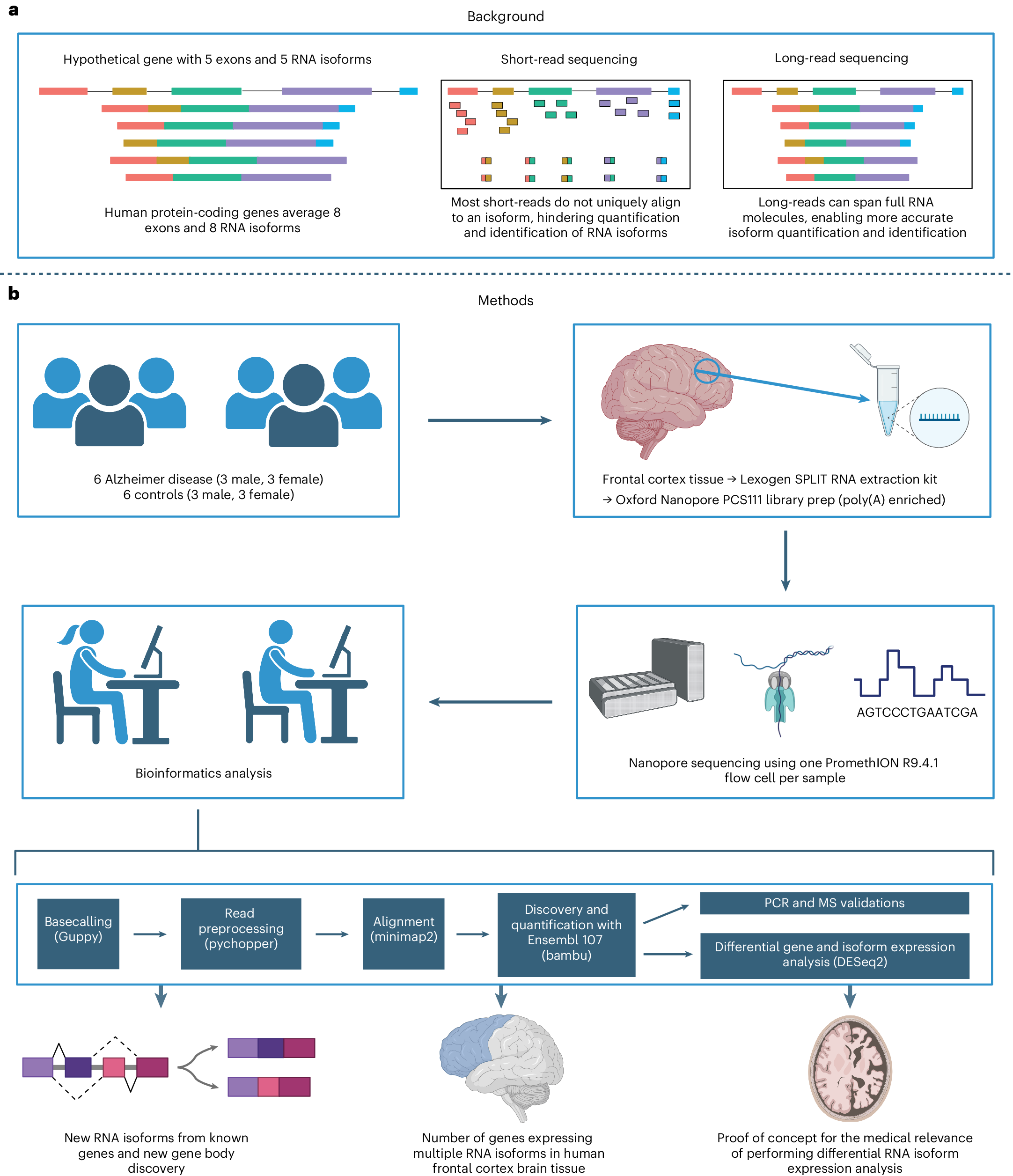In the quest to understand and treat neurological diseases, scientists are investigating RNA isoforms. These are different versions of RNA produced from the same gene, and they can play distinct roles in the body. A recent study has made significant strides in this area by analyzing RNA isoforms in the human brain, particularly focusing on Alzheimer’s disease.
What Are RNA Isoforms?
To grasp the importance of this study, it’s essential to understand what RNA isoforms are. Genes, which are made up of DNA, provide the instructions for making proteins. However, a single gene can produce multiple RNA molecules (isoforms) that may lead to different proteins or have different regulatory roles. This process is known as alternative splicing. Understanding which isoforms are present and their specific functions can help us target diseases more precisely.
The Study: A Closer Look at the Brain
Researchers at the University of Kentucky focused on the frontal cortex, a critical part of the brain involved in many complex functions such as memory, attention, and problem-solving. They studied 12 postmortem samples from older adults—six with Alzheimer’s disease and six without (controls), with an equal number of men and women in each group.
Advanced Sequencing Technology
To carry out their research, the scientists used a cutting-edge technology called Oxford Nanopore PromethION. This powerful tool allows for the sequencing of long strands of RNA, providing a detailed picture of the different RNA isoforms present in each sample.
Study design and rationale
a, Background explaining the improvements long-read sequencing brings to the study of RNA isoforms. b, Details for experimental design, methods and a summary of the topics explored in this article. MS, mass spectrometry.
Key Findings
- Medically Relevant Genes: The study identified 1,917 genes in the frontal cortex that produce multiple RNA isoforms. Out of these, 1,018 genes had isoforms with different protein-coding sequences. This means that each of these genes can produce multiple proteins with potentially different functions.
- Neurological Disease Links: Among the genes with multiple isoforms, 57 are linked to brain-related diseases such as major depression, schizophrenia, Parkinson’s disease, and Alzheimer’s disease. This suggests that RNA isoforms could play crucial roles in these conditions.
- New RNA Isoforms: The researchers discovered 53 new RNA isoforms in medically relevant genes. Some of these new isoforms were among the most highly expressed, indicating they might be particularly important in brain function or disease.
- Mitochondrial RNA: Interestingly, the study also found five new spliced RNA isoforms encoded by mitochondrial DNA. Mitochondria are the energy powerhouses of cells, and these new isoforms could offer insights into how mitochondrial function is linked to brain health and disease.
- Differential Expression in Alzheimer’s: The researchers identified 99 RNA isoforms that were expressed differently between Alzheimer’s patients and healthy controls. This finding highlights specific changes in RNA processing that occur in Alzheimer’s disease, which could lead to new diagnostic markers or therapeutic targets.
Implications for Disease Treatment
This study marks an important step toward understanding the functional diversity of RNA isoforms in the brain and their roles in neurological diseases. By pinpointing specific isoforms associated with diseases, scientists can develop more targeted treatments. For instance, therapies could be designed to modulate the expression of beneficial isoforms or suppress harmful ones.
Future Directions
Continued research in this field could unravel even more complexities of RNA isoforms and their functions. Further studies with larger sample sizes and different brain regions will provide a more comprehensive understanding. Ultimately, this research paves the way for innovative treatments that directly target the molecular underpinnings of neurological diseases, offering hope for more effective interventions.
Conclusion
The study of RNA isoforms in the brain is revealing new layers of complexity in how our genes function and how they may contribute to diseases like Alzheimer’s. By leveraging advanced sequencing technologies, researchers are uncovering crucial details that could transform our approach to diagnosing and treating neurological conditions. As we continue to explore this fascinating area, the potential for groundbreaking discoveries and therapies grows ever closer.
Aguzzoli Heberle B, Brandon JA, Page ML, Nations KA, Dikobe KI, White BJ, Gordon LA, Fox GA, Wadsworth ME, Doyle PH, Williams BA, Fox EJ, Shantaraman A, Ryten M, Goodwin S, Ghiban E, Wappel R, Mavruk-Eskipehlivan S, Miller JB, Seyfried NT, Nelson PT, Fryer JD, Ebbert MTW. (2024) Mapping medically relevant RNA isoform diversity in the aged human frontal cortex with deep long-read RNA-seq. Nat Biotechnol [Epub ahead of print]. [article]





